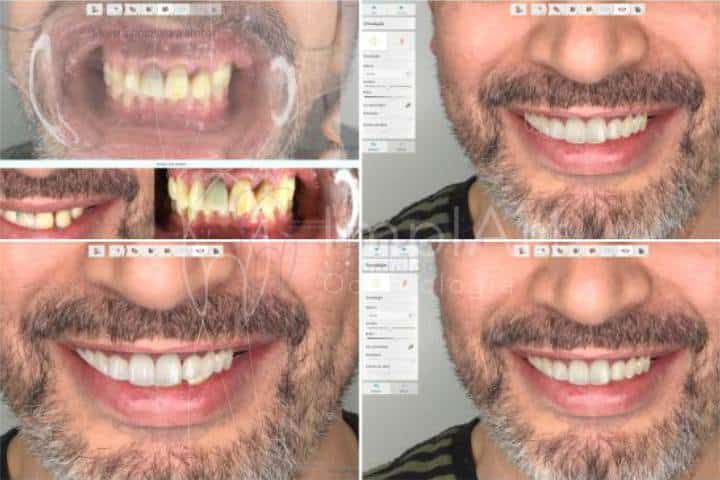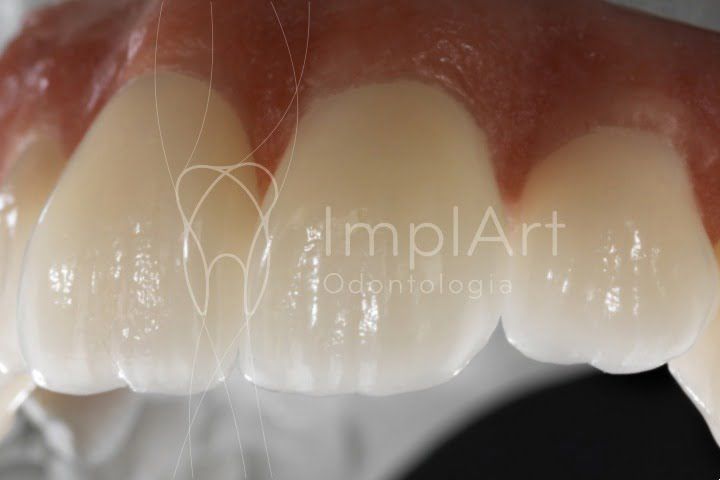Predictable results with digital smile planning
Digital smile planning makes it possible to design completely personalized treatments. It allows the patient to understand the stages of their treatment, thus aligning their expectations with the proposed treatment, and above all: it allows the dentist to have greater predictability of results. This applies to dental implant treatments, fixed prostheses and other types of dental prostheses, porcelain crowns and zirconia.
index
The use of Computer Graphics (3D) has helped in the planning and simulation of various dental treatments.
Thus, with computerized dental treatment planning, the dentist can design dental crowns, restorations, aesthetic treatments, dental contact lenses and plan the placement of dental implants in 3D. The aim of digital smile planning is to create a personalized treatment, seeking the harmony of the smile and also avoiding unnecessary procedures. As a result, it also makes treatment quicker, more convenient and more precise. When it comes to implant treatment, the speed of digital prostheses, combined with the choice of a rapid implant type, means that significant treatment times can be shortened.
With modern resources and equipment, it is possible to mill materials such as pure porcelain or pure zirconia. The modern Cerec Primemill, the latest German milling machine, which joins the team of milling machines in our digital laboratory, allows for even more precise results with even more detail.
Dental Aesthetics (Smile Design)
A great feature of computerized dental treatment planning programs is image overlay. This involves positioning the digital plan over the patient’s photo, making it easier, for example, for patients to understand their treatment before it starts.
In a nutshell, digital smile design begins with capturing the patient’s oral images using an intraoral scanner. These images are then transformed into a computerized 3D model of the dental arches.
The dentist then visualizes the initial state and designs crowns, restorations or dental contact lenses in order to solve various problems that compromise the aesthetics and harmony of the smile.
Intraoral scanning

Some cases, for example, can be carried out with digital smile planning:
- Increase in the length or volume of one or more teeth.
- Aligning asymmetrical teeth
- Making restorations for broken or decayed teeth
- Making dental contact lenses
- Harmonization of teeth with facial biotype
- Tooth shade harmonization
- Replacing unsightly restorations with porcelain restorations
- Making metal-free zirconia abutments and prostheses
Computer-planned dental treatments also allow many procedures to be carried out in a Day Clinic (intensive care modality).

Digital dental implant planning
Digital planning of dentalimplants helps ensure that the treatment result is tailored to the patient’s needs. It also helps to ensure that the treatment is efficient, as minimally invasive as possible and to avoid surgical accidents (such as hitting sensitive structures). Planning begins with a computerized tomography scan.
The three-dimensional images from the tomography then allow the implant dentist to know details such as bone volume and dimensions, and thus determine the best implant positions, as well as choosing implants with dimensions suited to each patient’s needs. The dentist also has the option of ordering a surgical guide, made on the basis of the information from the CT scan.
The surgical guide acts as a template with the exact indications where the incisions should be made, in such a way as to avoid unnecessary cuts and perforations. As a result, treatment becomes less invasive and recovery faster.
Read more about fear of dental implants

Guided surgery makes it possible:
- Prior surgical and prosthetic planning, resulting in a more precise procedure;
- Safe flapless surgery and the possibility of immediate loading;
- Respect for bone structures and the path of nerves and vessels;
- A reduction in the indication for bone grafting surgeries, as this requires detailed planning of the case beforehand;
- Planning aesthetic and functional procedures;
- Better post-operative recovery;
- Better communication between patient and dentist, contributing to greater trust during treatment.
ImplArt Odontologia uses the main technologies ever developed for computerized dental treatment planning. From intraoral scanning to the execution of prostheses, restorations and aesthetic dental contact lenses on 3D printers. If you have any questions, please contact us or come and visit us. We’d be delighted to welcome you!

 Agende sua consulta agora por WhatsApp
Agende sua consulta agora por WhatsApp























































